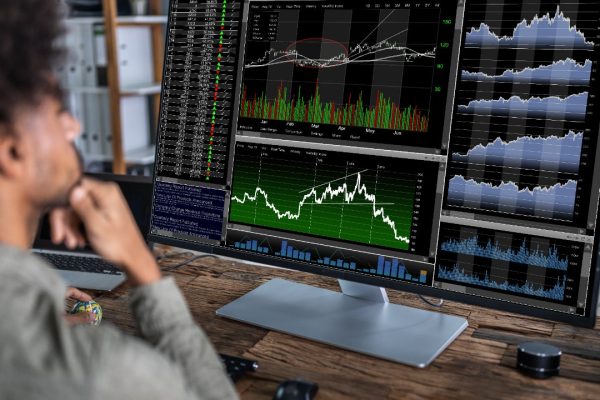When it comes to trading, there are a variety of options to choose from. Among the most popular are stocks and exchange-traded funds (ETFs). While both have risks, ETF trading can be hazardous for several reasons. We’ll explore some critical factors that make ETF trading riskier than stock trading and discuss strategies you can use to mitigate those risks or check out Saxo Capital Markets for more info.
Table of Contents
What are ETFs, and why are they risky?
An ETF is an investment fund that trades on an exchange like stocks. ETFs are typically designed to track the performance of a particular index, such as the S&P 500. However, some ETFs focus on specific sectors, such as healthcare or technology.
ETFs have become increasingly popular in recent years due to their many benefits. For example, they offer investors exposure to a broad range of assets without purchasing each one individually, and ETFs are also much cheaper than traditional mutual funds.
However, ETFs also come with certain risks that investors must be aware of. One of the biggest dangers of ETF trading is that it’s easy to get caught up in the market’s momentum. When prices are rising, it can be tempting to buy more ETFs to make a profit. However, this can lead to overtrading, quickly eating into your profits.
Another significant risk of ETF trading is that you may not clearly understand what you’re investing in. Unlike stocks, which represent ownership in a company, ETFs are often composed of a variety of different assets. It makes it difficult to determine the actual value of an ETF. As a result, you may end up paying too much for an ETF that isn’t worth as much as you think.
Finally, ETFs can be subject to high levels of volatility, which means that their prices can fluctuate dramatically over short periods.
How to mitigate the risks of ETF trading
While ETF trading has inherent risks, there are also ways to mitigate those dangers. The best thing you can do is to make sure you clearly understand what you’re investing in, which means researching and being aware of the available types of ETFs.
It’s essential to have realistic expectations regarding ETF trading. Remember that even the most well-thought-out investment strategy won’t always produce profits. Instead of chasing after short-term gains, focus on creating a diversified portfolio that will weather the ups or downs of the market over the long term.
Finally, don’t be afraid to take a break from trading if things get too hectic. The market will always be there, but your capital doesn’t have to be invested daily. If you need to, step away from your computer and take some time to relax.
The benefits of ETF trading
Firstly, ETFs offer investors exposure to a broad range of assets without having to purchase each one individually. It is a significant advantage as it allows you to diversify your portfolio without incurring high transaction costs.
Another benefit of ETF trading is that ETFs are much cheaper than traditional mutual funds, and this is because they have lower management fees and expense ratios. As a result, you can keep more of your investment returns instead of paying them out to fund managers.
Lastly, ETFs can be an excellent way to get exposure to hard-to-reach markets. For example, if you want to invest in foreign companies, you can do so through an international ETF. It provides you with diversification and helps to reduce your overall risk.
While there are many benefits to ETF trading, it’s important to remember that risks are also involved. Before investing, ensure you understand the dangers and always keep your portfolio diversified; this will help you maximise your returns while minimising your risk.
Tips for beginners who want to trade ETFs
If you’re thinking of getting started in ETF trading, there are a few things you need to keep in mind. First of all, ensure you understand the basics of investing before you start putting your money at risk, which means researching and learning as much as possible about the markets.
It’s also essential to create a diverse portfolio. Investing only in ETFs doesn’t put all of your eggs in one basket. Instead, hold a mixture of stocks, bonds, and cash to prepare you for market conditions.
Remember that it is a long-term investment strategy, so don’t try to make quick profits by taking unnecessary risks. If you stick to these tips, you’ll be on your way to success.





